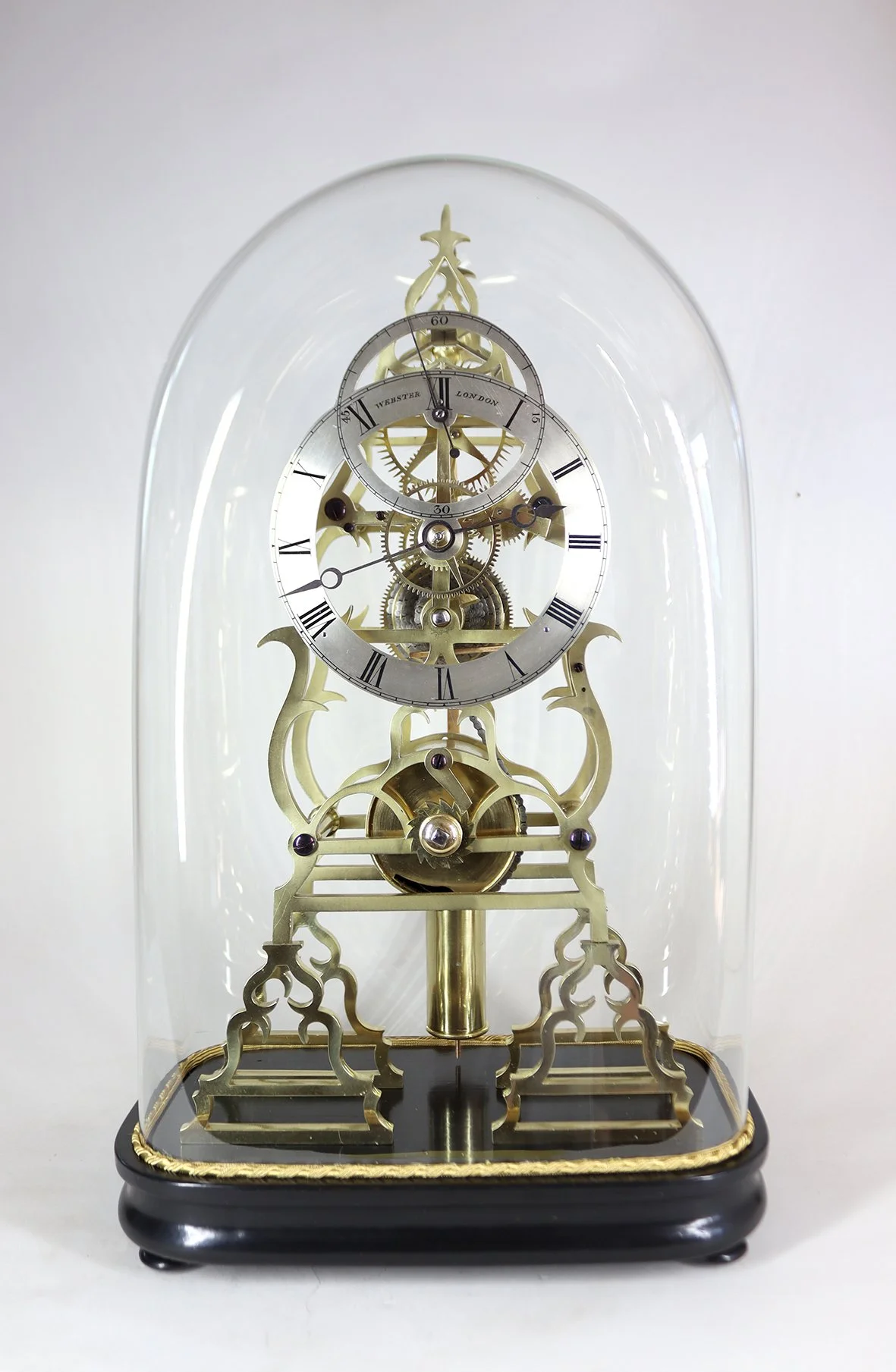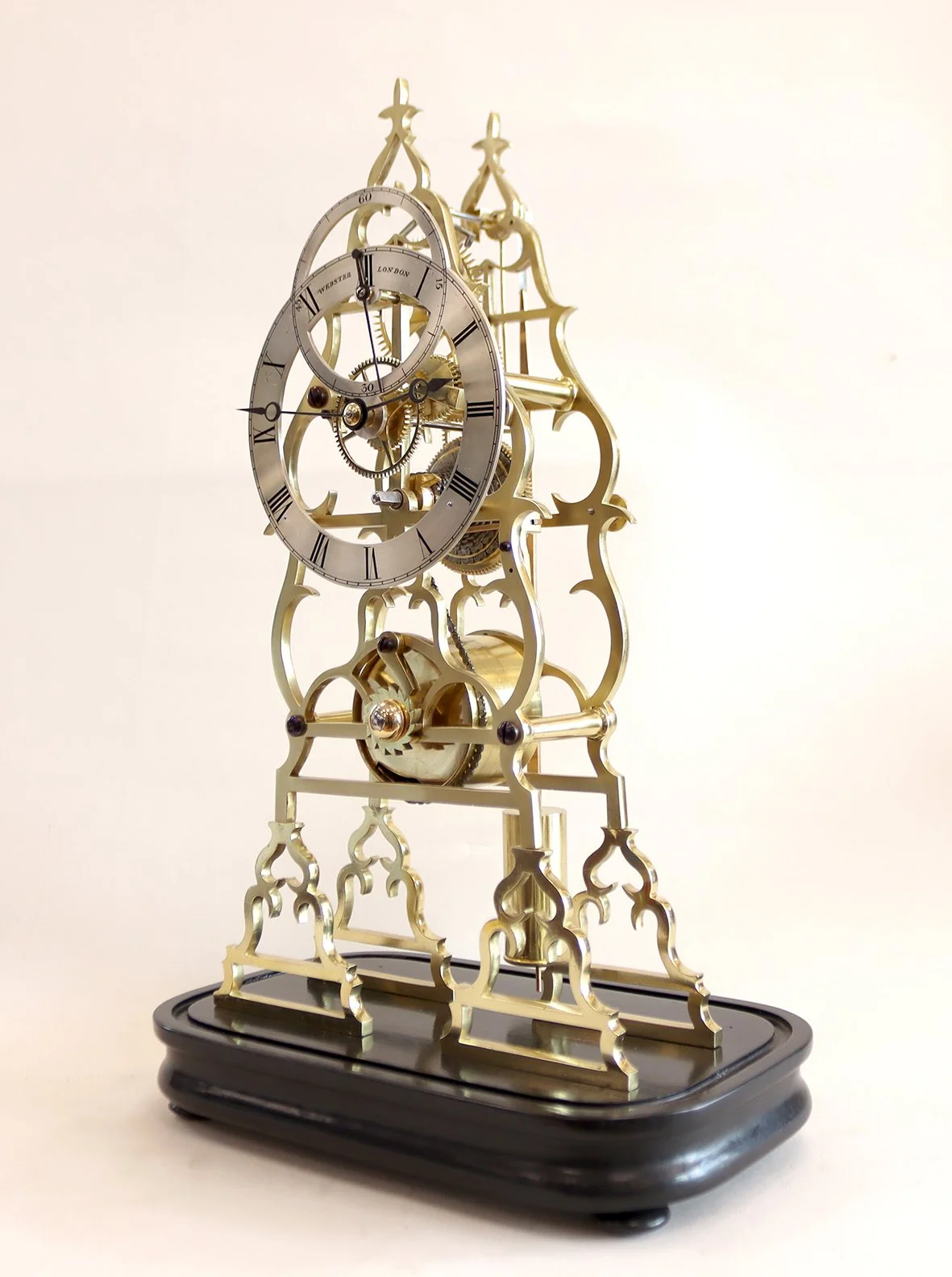 Image 1 of 9
Image 1 of 9

 Image 2 of 9
Image 2 of 9

 Image 3 of 9
Image 3 of 9

 Image 4 of 9
Image 4 of 9

 Image 5 of 9
Image 5 of 9

 Image 6 of 9
Image 6 of 9

 Image 7 of 9
Image 7 of 9

 Image 8 of 9
Image 8 of 9

 Image 9 of 9
Image 9 of 9










Single Fusee Skeleton Timepiece By Richard Webster
This highly decorative skeleton timepiece signed Webster, London has a single fusee eight day movement regulated by a brass cylinder pendulum. With a very finely made deadbeat escapement and sixty tooth escape wheel. The silvered roman dial is intersected with a subsidiary seconds dial of unusual design. The plates are very finely pierced in a Gothicized Arabesque pattern of foliate scrollwork mounted on an ebonised base with its original glass dome finished in a brocade cord to protect the edge of the glass.
Dating from circa 1830 this clock was made buy Richard Webster of the famed family of clockmakers that can be traced back to William Webster who was apprenticed to Thomas Tompion “The Father of English Clockmaking”. Richard Webster, the second in a series of Richards, who moved the family business from 26 Exchange Alley to 43 Cornhill around 1813. The company traded from 43 Cornhill and later 74 Cornhill.
Richard Webster was chronometer maker to the Admiralty and to the East India Company. Under Richard Webster II the business seemingly went from strength to strength, at one point occupying two premises – at 74 Cornhill and at nearby 3 Birchin Lane. The Webster name was so well known by now that the surname alone would suffice when signing clock faces.
Richard Webster is listed in Brian Loomes’ “Watchmakers and Clockmakers of the World – 21st century edition” as working between 1810 and 1840
Simon C. Davidson, “Box Chronometers for India 1800-1936,”Antiquarian Horology, no.4, vol.35, December 2014
Jeremy Evans, Jonathan Carter & Ben Wright, Thomas Tompion 300 Years (Stroud: Water Lane Publishing, 2013).
This clock comes with our two year guarantee.
42cm H x 25cm W x 14cm D (with dome).
This highly decorative skeleton timepiece signed Webster, London has a single fusee eight day movement regulated by a brass cylinder pendulum. With a very finely made deadbeat escapement and sixty tooth escape wheel. The silvered roman dial is intersected with a subsidiary seconds dial of unusual design. The plates are very finely pierced in a Gothicized Arabesque pattern of foliate scrollwork mounted on an ebonised base with its original glass dome finished in a brocade cord to protect the edge of the glass.
Dating from circa 1830 this clock was made buy Richard Webster of the famed family of clockmakers that can be traced back to William Webster who was apprenticed to Thomas Tompion “The Father of English Clockmaking”. Richard Webster, the second in a series of Richards, who moved the family business from 26 Exchange Alley to 43 Cornhill around 1813. The company traded from 43 Cornhill and later 74 Cornhill.
Richard Webster was chronometer maker to the Admiralty and to the East India Company. Under Richard Webster II the business seemingly went from strength to strength, at one point occupying two premises – at 74 Cornhill and at nearby 3 Birchin Lane. The Webster name was so well known by now that the surname alone would suffice when signing clock faces.
Richard Webster is listed in Brian Loomes’ “Watchmakers and Clockmakers of the World – 21st century edition” as working between 1810 and 1840
Simon C. Davidson, “Box Chronometers for India 1800-1936,”Antiquarian Horology, no.4, vol.35, December 2014
Jeremy Evans, Jonathan Carter & Ben Wright, Thomas Tompion 300 Years (Stroud: Water Lane Publishing, 2013).
This clock comes with our two year guarantee.
42cm H x 25cm W x 14cm D (with dome).
